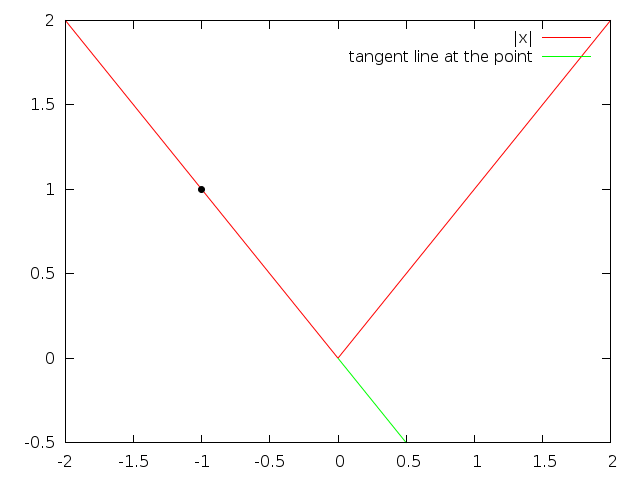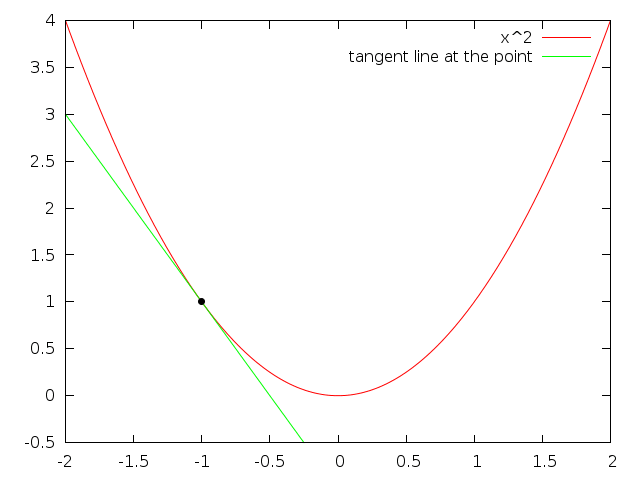Why is the absolute value function not differentiable at $x=0$?
There are 2 ways to understand your question, one is asking for a proof, the other is asking for intuitive reasoning, I will answer both here.
Proof that $|x|$ is not differentiable at $x=0$
We are trying to find
$$\lim_{h\to0}\frac{f(0+h)-f(0)}{h}\quad\text{where }f(x)=|x|$$ $$\lim_{h\to0}\frac{|0+h|-|0|}{h}$$ $$=\lim_{h\to0}\frac{|h|}{h}$$ Let's find the right limit $$=\lim_{h\to0^+}\frac{|h|}{h}$$ Since $h>0$ $$=\lim_{h\to0^+}\frac{h}{h}=1$$ Let's find the left limit $$=\lim_{h\to0^-}\frac{|h|}{h}$$ Since $h<0$ $$=\lim_{h\to0^-}\frac{-h}{h}=-1$$
If the left and right limits are not the same, the limit does not exist.
Intuitive reasoning
What does the derivative represent? The slope of the tangent line. Looking at different values of the absolute value function in some plots:

Note that the tangent line is below the actual line for the absolute value function.
The problem with the derivative at $x=0$ is that it changes abrubtly, and derivatives don't like that. Compare to the same plot but with $x^2$

The difference is clear, the tangent line smoothly changes when approaching $x=0$ instead of the abrubt change from one line to another. This is why the derivative does not exist at $x=0$ for $|x|$.
Another way to think about derivatives is as “the slope of the line you get, when you zoom in really far”. If you zoom in on $x^2$ it'll look a lot like a straight line, but if you zoom in on $|x|$, it will never look like a straight line. If a function is differentiable, it will look like a straight line when you zoom in far enough.